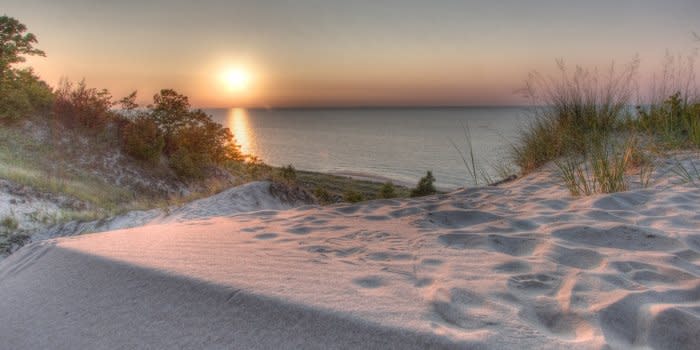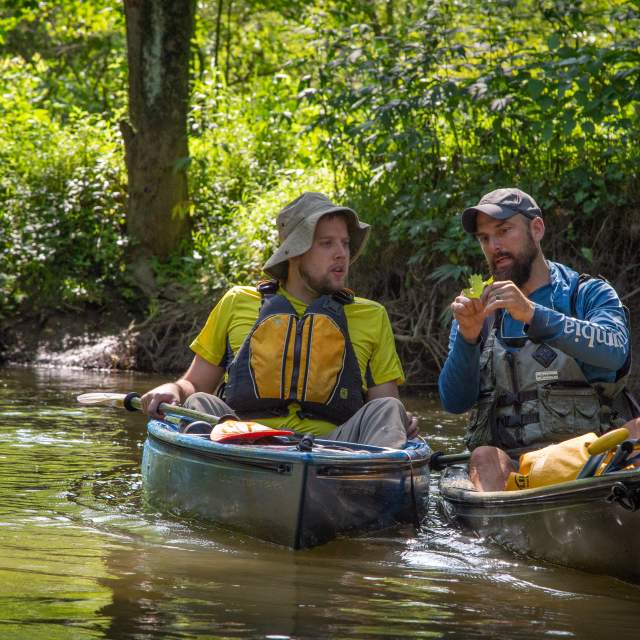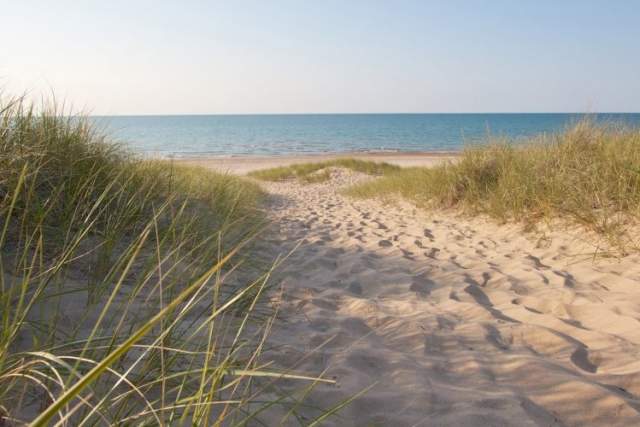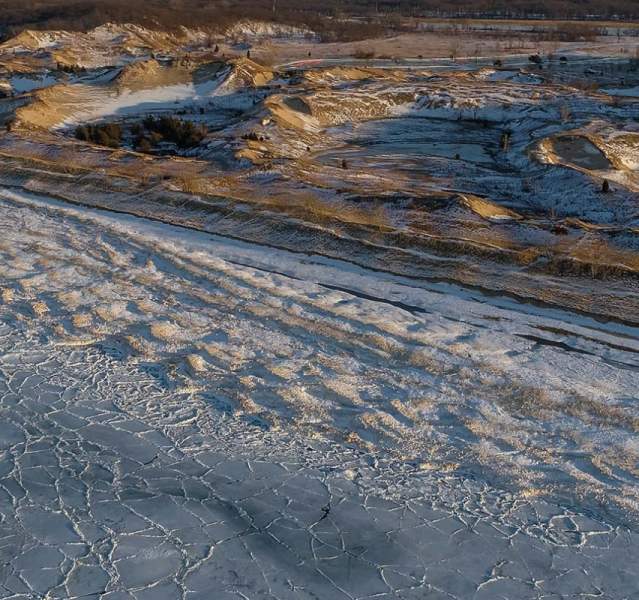The Dunes
Origin of the Dunes
Lake Michigan originally formed around 11,000 years ago when the Wisconsin Glacier began to slowly melt and recede north. As its melt rate fluctuated, the glacier left behind a variety of different natural landscapes including rolling hills, wetlands, Lake Michigan, and the dunes ridgeline.
Near the Lake Michigan shoreline, younger dune complexes show the many stages of plant succession. Wide-open beaches, grass-covered dunes, and blowouts transition into woody shrub vegetation and forested dunes. Moving further inland, older dune complexes can be seen with well-established oak forests.
Types of Dunes
There are two types of dunes: foredunes and blowout dunes.

Foredunes
Foredunes are close to the beach and covered in vegetation like marram grass. This makes for a more stabilized dune and allows even more plant life to thrive.

Blowout Dunes
Blowout dunes are caused by intense winds that rip the dunes apart. The loose sand makes a “living dune,” that can move up to several feet every year. Blowout dunes can sometimes be the result of unapproved trails, or social trails, which gradually turn into bigger and bigger areas of sand. So, please check your map to make sure you are on approved trails only!
Birthplace of Ecology
The Indiana Dunes are known as the birthplace of ecology, thanks to Henry C. Cowles’s study of plant succession in the area. Cowles noted that the shape of the land and type of soil in an area helped decide which plant species live there. It seems obvious to us now, but this was a breakthrough in the early 1900s.
Cowles’ three landmark scientific papers introduced the concepts of plant succession and climax formation. In plant succession, each community of plants dies and creates the ideal conditions for the plant community that replaces it. Plant succession continues on until a stable plant community forms, which is called a climax formation. Plant succession can be seen in the Indiana Dunes as the empty beach transitions to beach grasses, followed by cottonwood, pine trees, and finally the oak forests, which are the climax formation of the dunes!


Singing Sands
Dunes, of course, are always made of sand, but sand isn’t always made of the same materials. The sand in the Indiana Dunes is mostly made out of quartz and silica left behind by glaciers. Its composition creates an interesting sound when you walk on it, which is why we call it “singing sands.” There are only a few other places in the world that have singing sands, like Dubai and Japan.
FAQ
Whether you’re just starting or in the final planning stages, our collection of frequently asked questions might give you a few more things to think about when traveling to the Indiana…
Beach Closures & Safety
With nine beaches and all this coastline, there are plenty of ways to enjoy our shores. But lakeside fun should never come at the price of safety. Here are a few tips to keep you up-to-date on…
Entry Fees
The Indiana Dunes is made up of two different parks—the Indiana Dunes National Park and the Indiana Dunes State Park.




